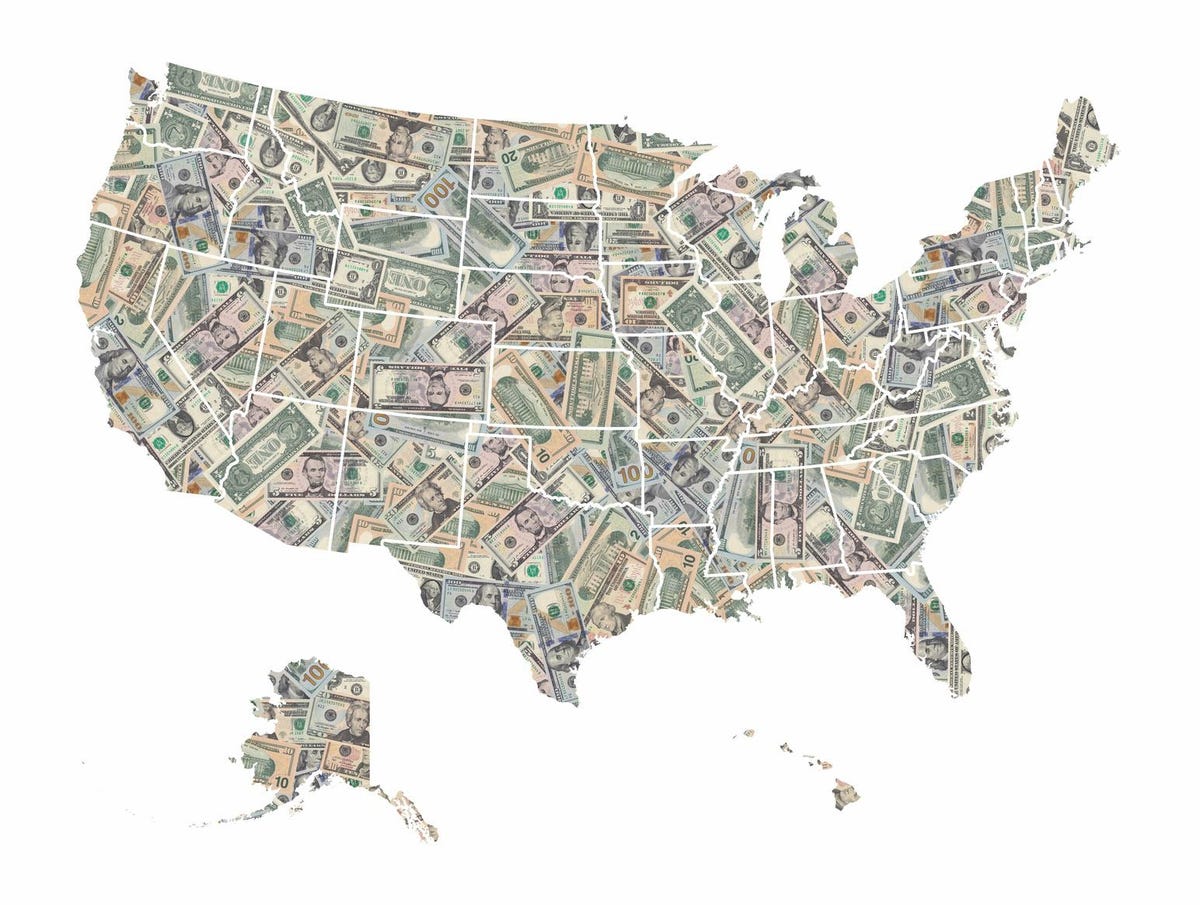
Massive federal spending, along with innovative Federal Reserve actions, has prevented state and … [+]
When the Covid-19 recession hit hard in spring 2020, people feared that state budgets would collapse, driving cities and states to bankruptcy and crippling public services. Although we still must keep investing in public goods, the feared budget disaster didn’t happen. Why? Prompt government action, including unprecedented steps by the Federal Reserve and massive federal spending.
Remember the headlines? In May 2020, the New York Times
I was among those fearing deep harm from the Covid-19 recession. In May 2020, I endorsed a $1 trillion spending package for states and cities, arguing that “collapsing” tax revenues were undercutting public sector jobs and threatening the macroeconomy.
There was good reason to be fearful. State and local tax revenues in the second quarter of 2020 were 18% lower than in 2019. That drop was similar to the Great Recession’s first year, and in that recession state general fund revenues didn’t fully recover until FY2019— 11 years later. Many observers feared the Covid-19 recession would cause a similar decade of state and local budget and public service stagnation.
There were other ominous signs. In March 2020, the municipal bond market that finances state and local debt suddenly seized up, as bond holders demanded redemptions and leveraged sellers had to dump their holdings at bargain prices in order to generate cash. That drove prices down, further panicking sellers and causing a run on the market.
MORE FOR YOU
To stem the panic, the Federal Reserve took the untried and unprecedented step of creating a new “Municipal Liquidity Facility” to backstop the market and act as a buyer of last resort for state and local debt. No one knew if it would work, but the Fed’s creative and bold action did stabilize the muni market.
But just being able to borrow wasn’t enough when states and cities feared massive revenue losses. In 2020, Moody’s registered more muni credit rating downgrades than upgrades for the first time since 2014. Aggregate state “rainy day” funds—monies put aside to cover budget gaps—fell for the first time since the Great Recession.
But budgets didn’t continue falling and the feared collapse didn’t happen. Why not? Massive federal spending and very low interest rates.
The Covid-19 recession was a huge sudden shock to aggregate economic demand. But the government responded the way Keynesian economics teaches—prop up demand with government debt and spending to avoid spiraling into a depression. The Fed did its part by keeping interest rates low and telling markets rates would stay low until the economy showed strong signs of recovery.
The CARES Act of March 2020 provided $150 billion to state and local governments, mostly channeled through states. An additional $125 billion for more specific spending, including public health, was authorized in December 2020. And in March 2021, President Biden’s American Rescue Plan made another $350 billion available to states and localities.
But it wasn’t just fiscal aid to governments. The federal government sent checks directly to households, authorized loans to small businesses (effectively grants that didn’t need to be repaid), expanded unemployment insurance to cover gig and part-time workers and lengthened the time workers could receive it, instituted an eviction moratorium, and took many other steps to restore economic growth.
For the economy and for state and local budgets, it worked. Earlier this year, 38 states reported higher than expected general fund revenues for FY2021. Most states are increasing spending this fiscal year, for education and teacher salaries, health care and Medicaid, and other needed services.
Municipal bond markets are optimistic. Nuveen said on July 14 that “the municipal market has fully recovered” from the pandemic. In August, BlackRock
Credit ratings are improving across the board. States that were downgraded in 2020 are now seeing upgrades. Even Illinois—traditionally among the worst rated governments—saw its first credit rating upgrade in over 20 years.
Things aren’t perfect. State and local government employment in August was still 807,000 jobs lower than before the pandemic. The “K-shaped” nature of the recovery has increased inequality, with especially negative effects on non-white households and those with lower educational credentials. And the spreading Delta variant is causing economic tremors, especially in states with those with low vaccination rates and anti-masking and other public health policies.
So we avoided the feared collapse of municipal budgets and muni bond markets by prompt and massive government spending and intervention across the economy. That’s the lesson taught by stabilized state and local budgets. Only the federal government has this capacity, and it used it correctly to stave off significant damage and a possible depression.




